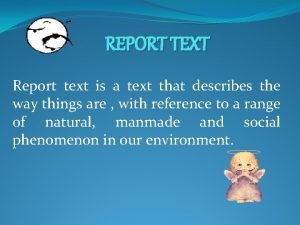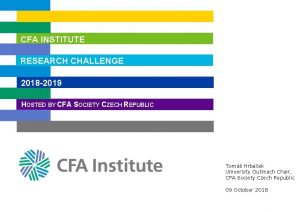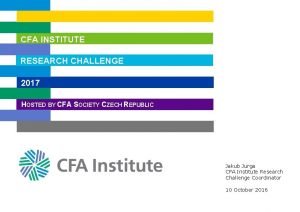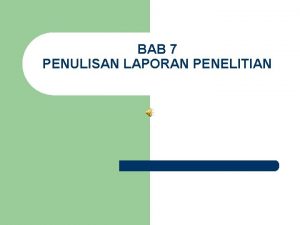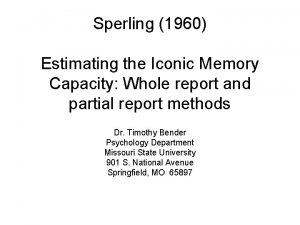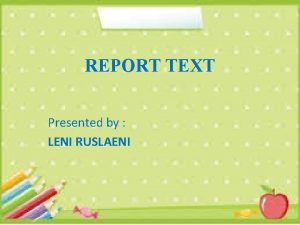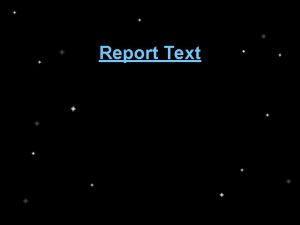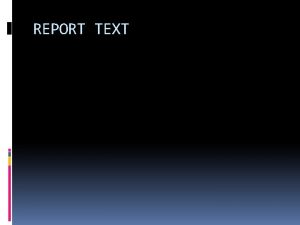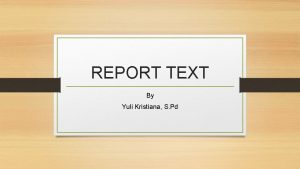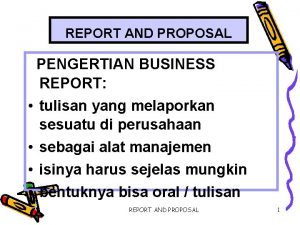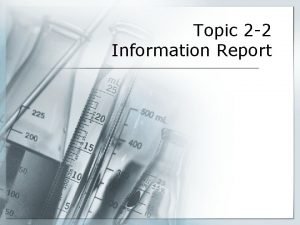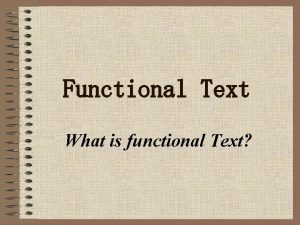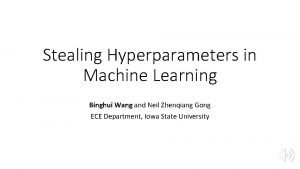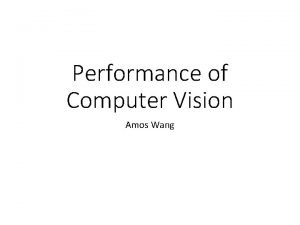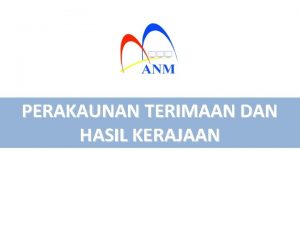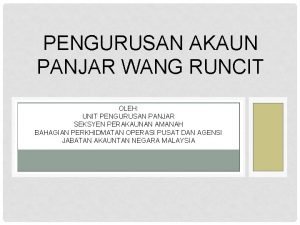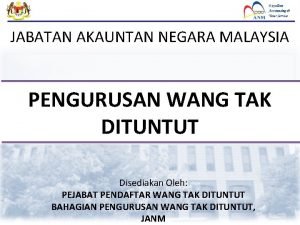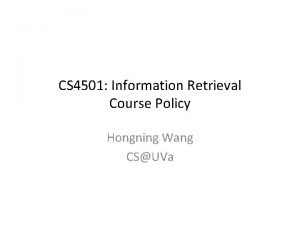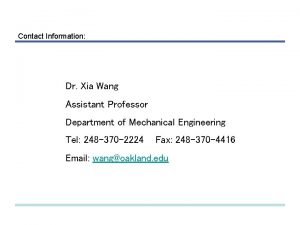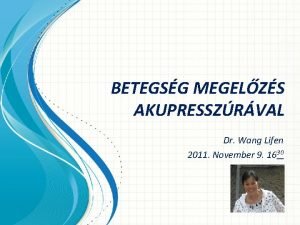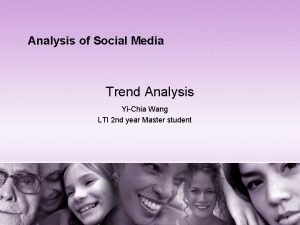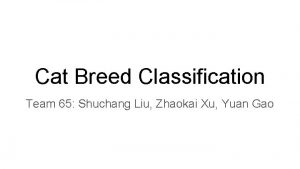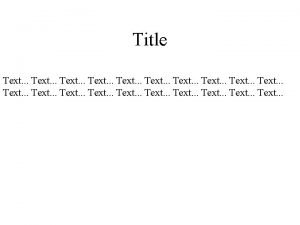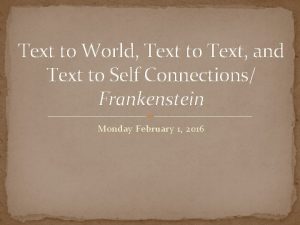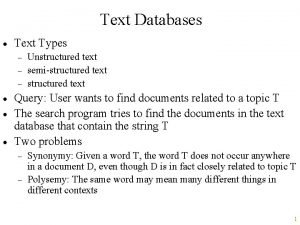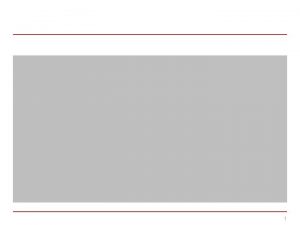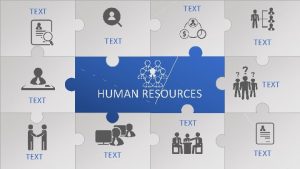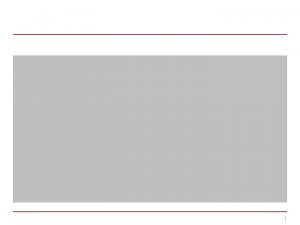Report on Text VQA Challenge Wang Zhaokai Outline







































- Slides: 39

Report on Text. VQA Challenge Wang Zhaokai

Outline 0、Text. VQA dataset 1、Lo. RRA (baseline) 2、2019 winner 3、2019 runner-up 4、M 4 C Accuracy: 27. 63% Accuracy: 31. 44% Accuracy: 30. 54% Accuracy: 40. 46%

Text. VQA Dataset VQA that are related to extracting text from images.

Examples of Text. VQA dataset

Length of Questions and Answers

Number of OCR tokens

Most Common Questions and Answers

• The model need to combine question, image and text, and choose between OCR results or fixed vocabulary. • VQA models do not perform well on Text. VQA.

1、Lo. RRA (Baseline) CVPR 2019


2、2019 Text. VQA Challenge Winner VQA-Dial Workshop 2019


MFH module Similar to co-attention

• Calculate the similarity between Answer Embedding and OCR / Top-K Answer from fixed vocabulary

Results

3、2019 Text. VQA Challenge Runner-up VQA-Dial Workshop 2019



4、M 4 C From arxiv

Motivation Current models: • fusion between two modalities (question & image, question & OCR tokens) • Single-step classification • Insufficient text representation (ignore font, color or location of the text) M 4 C: • Multimodal transformers • Iterative Answer Prediction • Rich representation of text


Model • Common embedding space • Multimodal Transformers • Iterative Answer Prediction

Common Embedding Space (d dimension) • Embedding of question words: Pre-trained BERT and fine-tune during training

• Embedding of detected objects: where (appearance feature)is extracted by Faster R-CNN (location feature) =

• Embedding of OCR with rich representations character, appearance (font, color), location : OCR tokens → Fast. Text → word embedding with subword information : : bounding box → Faster R-CNN : character in tokens → PHOC : (location feature) =

Multimodal Fusion • Allow attention between entities from different modalities

Dynamic Pointer Network • Take in previous word and predict next word with dynamic pointer network • Predict scores of i-th word in vocabulary and n -th OCR token.


Answer Prediction Take argmax of score , to predict next word with the highest

Extra Token • Add position embedding of step t • Add type embedding (whether previous word is from vocabulary or OCR) • Add <start> and <end> token • Use multi-label sigmoid loss

Experiments Text. VQA dataset

• Important to have both fixed vocabulary and OCR copying

• Giant improvement from 1 -step to 2 -step

• ST-VQA dataset

• OCR-VQA dataset

Qualitative Results

- • Most errors come from OCR

My Understanding • Key point: how to combine 3 modalities (question, image, OCR tokens) and how to choose answers from OCR or fixed vocabulary. • (compared to VQA:only 2 modalities; answers only from fixed vocabulary)

Preparations • 2020. 2 Basic Knowledge (cs 231 n, cs 224 n) Papers (Lo. RRA, M 4 C) Environment (pythia) • 2020. 3 Run Lo. RRA model, achieve same accuracy • 2020. 4 – 2020. 5 Train model and fine-tune, improve accuracy by 2% • Deadline: 5. 27
 Devi parikh
Devi parikh What is an example of a text-to-media connection?
What is an example of a text-to-media connection? Whitchester house
Whitchester house What is the text structure of report text
What is the text structure of report text Cfa institute research challenge 2018
Cfa institute research challenge 2018 Cfa research challenge report template
Cfa research challenge report template Example of sentence outline
Example of sentence outline Outline of the research
Outline of the research Writing a status report
Writing a status report Using the partial report method sperling
Using the partial report method sperling Outline critical approaches to interpreting text
Outline critical approaches to interpreting text Report text definition
Report text definition Pengertian report
Pengertian report Report text bats
Report text bats Karakteristik factual report text
Karakteristik factual report text Fungsi business report
Fungsi business report Exemplification text structure
Exemplification text structure What does functional text mean
What does functional text mean Regina wang md
Regina wang md Stealing hyperparameters in machine learning
Stealing hyperparameters in machine learning Yongge wang
Yongge wang Caroline c wang
Caroline c wang Amos wang
Amos wang Ap 70 pengeluaran resit rasmi
Ap 70 pengeluaran resit rasmi Wang panjar runcit
Wang panjar runcit Huazheng wang
Huazheng wang Salinan surat pengesahan asal entiti serahan
Salinan surat pengesahan asal entiti serahan Holtek semiconductor inc
Holtek semiconductor inc Hongning wang
Hongning wang Dr xia wang
Dr xia wang Dr kenneth wang
Dr kenneth wang Minmei wang
Minmei wang Gyomor 36 pont
Gyomor 36 pont Social media trend analysis
Social media trend analysis Dr john wang
Dr john wang Ryan wang hsbc
Ryan wang hsbc Guanhua wang
Guanhua wang Landy wang microsoft
Landy wang microsoft Jyhwen wang
Jyhwen wang Dr robert wang
Dr robert wang



